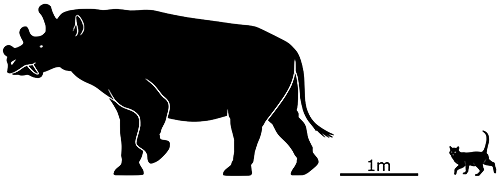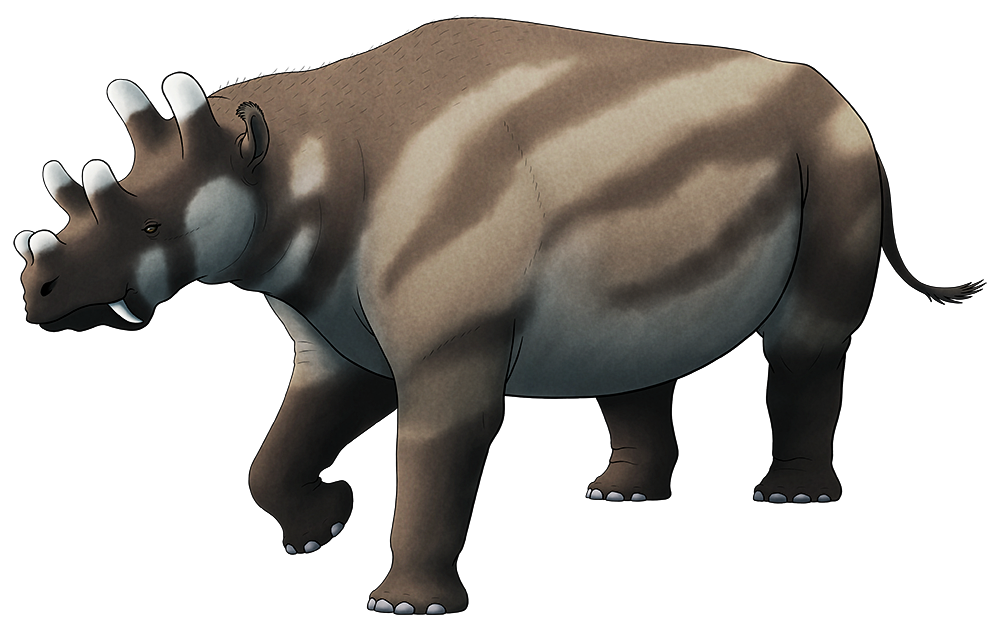The dinoceratans were a lineage of hoofed herbivorous mammals whose evolutionary affinities are a little uncertain, but may have been related to the South American meridiungulates. Found in Asia and North America from the late Paleocene to the late Eocene, they had bulky rhino-like bodies and were some of the largest terrestrial animals of their time.
Eobasileus cornutus was one of the biggest of them all, measuring around 2.1m tall at the shoulder (~7′) and living in the Western United States during the early Eocene, about 46-40 million years ago.
And it had a very odd-looking head, with six blunt ossicone-like horns, large sabre-like fangs, bony flanges on its lower jaw, a concave forehead, and a proportionally tiny brain for its body size. The horns and fangs were sexually dimorphic, much smaller in females, suggesting they were mainly used for display or combat between males.


